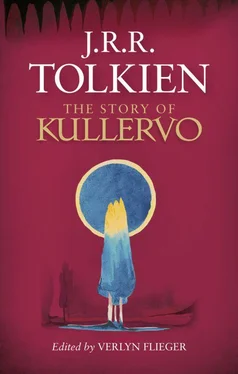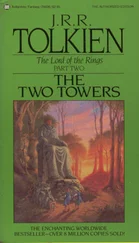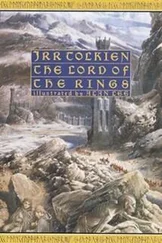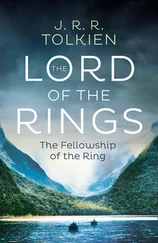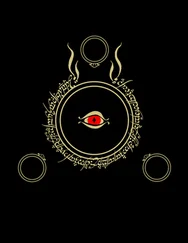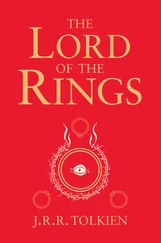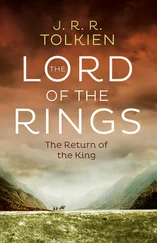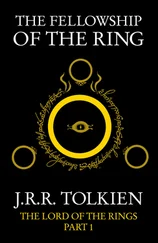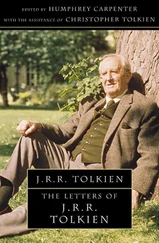Tolkien had first read Kalevala in the 1907 English translation of W.F. Kirby while a student at King Edward’s School in Birmingham in 1911. He thought Kirby’s translation unsatisfactory, but found the material itself to be like ‘an amazing wine’ ( Letters , p. 214). Both his story and the accompanying two drafts of his college talk, ‘On “The Kalevala”’, give evidence of Tolkien’s enthusiastic desire to communicate the taste of this new wine, its fresh and pagan flavour and the ‘delicious exaggerations’ of what were to him ‘wild… uncivilized and primitive tales’. These uncivilized and primitive tales so captured his imagination that when he went up to Oxford in the fall of 1911, he borrowed C.N.E. Eliot’s Finnish Grammar from the Exeter College Library in an attempt to teach himself enough Finnish to read the original. He was largely unsuccessful, and ruefully confessed he had been ‘repulsed with heavy losses’.
Tolkien was particularly taken by the character he called ‘Kullervo the hapless’ ( Letters , p. 214), Kalevala ’s closest approximation of a tragic hero. So taken, indeed, was he that in his final year as an Oxford undergraduate he wrote to his fiancée Edith Bratt, some time in October of 1914, that he was ‘trying to turn one of the stories — which is really a very great story and most tragic — into a short story… with chunks of poetry in between’ ( Letters , p. 7). This was ‘The Story of Kullervo’, the bulk of which was produced, as nearly as can be ascertained, some time during the years 1912–14 (ibid., 214) and almost certainly before his war service intervened and he was sent to France in 1916. The dating is problematic. Tolkien himself placed it as early as 1912; scholars Wayne Hammond and Christina Scull prefer 1914; and John Garth sets it at late 1914. The manuscript title page (Plate 1) carries a date in parentheses ‘(1916)’ in Christopher Tolkien’s hand, but as this is written on the verso of an appreciation on the occasion of Tolkien’s honorary Doctorate from the National University of Ireland in 1954, the 1916 date is retrospective by almost forty years. The 1916 date is further called into question by a notation written below it in pencil: ‘HC [Humphrey Carpenter] says 1914.’ This comment would have been made during or after the time when Carpenter was at work on his biography of Tolkien, published in 1977.
Any work’s time of composition is often difficult to determine with precision, since most creative activity develops over an extended period from first idea to final version and can be started, stopped, revised and re-revised along the way. Without more manuscript evidence than we now possess, it is impossible to pinpoint the time of Tolkien’s work on ‘Kullervo’ from inspiration to cessation any more narrowly than during the years 1912–1916. What is fairly certain is that he did not begin work on the story before he read Kalevala in 1911, and may not have done further work on it after his posting to France in June of 1916. From Tolkien’s comment in the letter to Edith, it seems to have been the story’s tragic qualities as much as its mythic qualities that ‘set the rocket off in story’, and so powerfully attracted him that he felt the need to re-tell it.
Aside from its palpable influence on the story of Túrin Turambar, however, The Story of Kullervo is notable also for the ways in which it prefigures the narrative styles of Tolkien’s future corpus. It presages without precisely fitting a number of the genres or categories or forms — short story, tragedy, myth-retelling, verse, prose — in which he later wrote. It is at once a short story, a tragedy, a myth, a blend of prose and poetry, yet — hardly surprising in so early a work — all of these in embryo, none fully realized. Thus in all these areas it stands a little to one side of the rest of the canon. As a short story it invites comparison with his later short stories, Roverandom, Leaf By Niggle, Farmer Giles of Ham , and Smith of Wootton Major ; as a myth re-telling it belongs with his Legend of Sigurd and Gudrún and The Fall of Arthur ; in its mix of prose and poetry it recalls a similar mixture in Tolkien’s masterwork, The Lord of the Rings . Stylistically, too, there is ground for comparison, for the ‘chunks of poetry’ not infrequently segue into a rhythmic prose that evokes the poetry-prose mix of the speech of Tom Bombadil.
The comparisons end there, however, for in other aspects The Story of Kullervo has little in common with most of the above works. Only The Legend of Sigurd and Gudrún conveys the pagan atmosphere that is the essence of Kullervo , and The Fall of Arthur its sense of ineluctable doom. Roverandom , although it has, as recently pointed out, distinct similarities to the mythic Irish imramma or voyage stories, {2} 2 See Kris Swank’s article ‘The Irish Otherworld Voyage of Roverandom ’ in Tolkien Studies Volume XII, planned for publication in 2015.
was in its genesis and essentially remains a tale for children. Leaf By Niggle , although it is set in vaguely modern times and in a place that, while never identified, is pretty clearly Tolkien’s own England, is a parable about the journey of the soul, and by far the most allegorical of all Tolkien’s works. Farmer Giles of Ham is a playfully satiric pseudo-folktale with a number of scholarly inside jokes and topical references to Tolkien’s Oxford. Smith of Wootton Major is pure fairy tale, the most artistically consistent of all his shorter works. In contrast to all of these, The Story of Kullervo — emphatically not for children, neither playful nor satiric, not allegorical, and with little of the faërie quality Tolkien found essential for fairy stories — is relentlessly dark, a foreboding and tragic tale of blood feud, murder, child abuse, revenge, incest and suicide, so different in tone and content from his other short fiction as to be almost a separate category.
As a tragedy, The Story of Kullervo conforms in large measure to the Aristotelian specifics for tragedy: catastrophe , or change of fortune; peripeteia , or reversal, in which a character inadvertently produces an effect opposite to what is intended; and anagnoresis , or recognition, in which a character moves from ignorance to self-knowledge. The classic example is Oedipus, whose drama Sophocles situated within quasi-historical time and place — Thebes in the 4th century BC. Tolkien’s fictive Middle-earth examples are Túrin Turambar, who is closely modelled on Kullervo, and his least likely tragic hero Frodo Baggins, whose journey and emotional trajectory from Bag End to Mount Doom take him through all of Aristotle’s norms set within the larger context of the history of Middle-earth, as do those of Túrin. In contrast, The Story of Kullervo is largely ahistorical, creating its own self-contained world whose only time-period is ‘when magic was yet new.’
As Tolkien’s earliest effort to adapt an existing myth to his own purpose, The Story of Kullervo belongs with his two other, more mature such efforts, both conjecturally dated to the 1920s–30s. These are The Legend of Sigurd and Gudrún , his verse retelling of the Völsung story from the Icelandic Poetic Edda , and The Fall of Arthur , his synthesis and recasting into modern English alliterative verse of two Middle English Arthurian poems. Like his Arthur and Sigurd, Tolkien’s Kullervo is the latest version of a mythic figure who has had many iterations. Aspects of Kullervo can be traced back to the early medieval Irish Amlodhi, to the Scandinavian Amlethus of Saxo Grammaticus’s 12th-century Gesta Danorum , and to Shakespeare’s more modern Renaissance Prince Hamlet. The sequence culminates in Kalevala ’s Kullervo, to which Tolkien is most directly indebted. And yet Tolkien’s story does not quite fit with his later mythic adaptations either. First, both Kalevala and Tolkien’s Kullervo are considerably less well-known than are Sigurd and Arthur. The Story of Kullervo will, for many readers who are acquainted with Sigurd and Arthur, be their first introduction to this unlikely hero. Thus Tolkien’s version carries no baggage and is likely to be met with no preconceptions. Few, if any, of his readers will recognize Shakespeare’s Prince Hamlet in Tolkien’s Kullervo, though sharp eyes may see in Kullervo’s ruthless and unscrupulous uncle Untamo the seed of Hamlet’s ruthless and unscrupulous uncle, Claudius.
Читать дальше
